Meet the Beadles: The centuries-old private police force at Burlington Arcade, the world's swishest shopping mall
This week marked the 200th birthday of London’s Burlington Arcade. Adam Hay-Nicholls goes undercover with the Beadles, its private police force. With photographs by Richard Cannon.
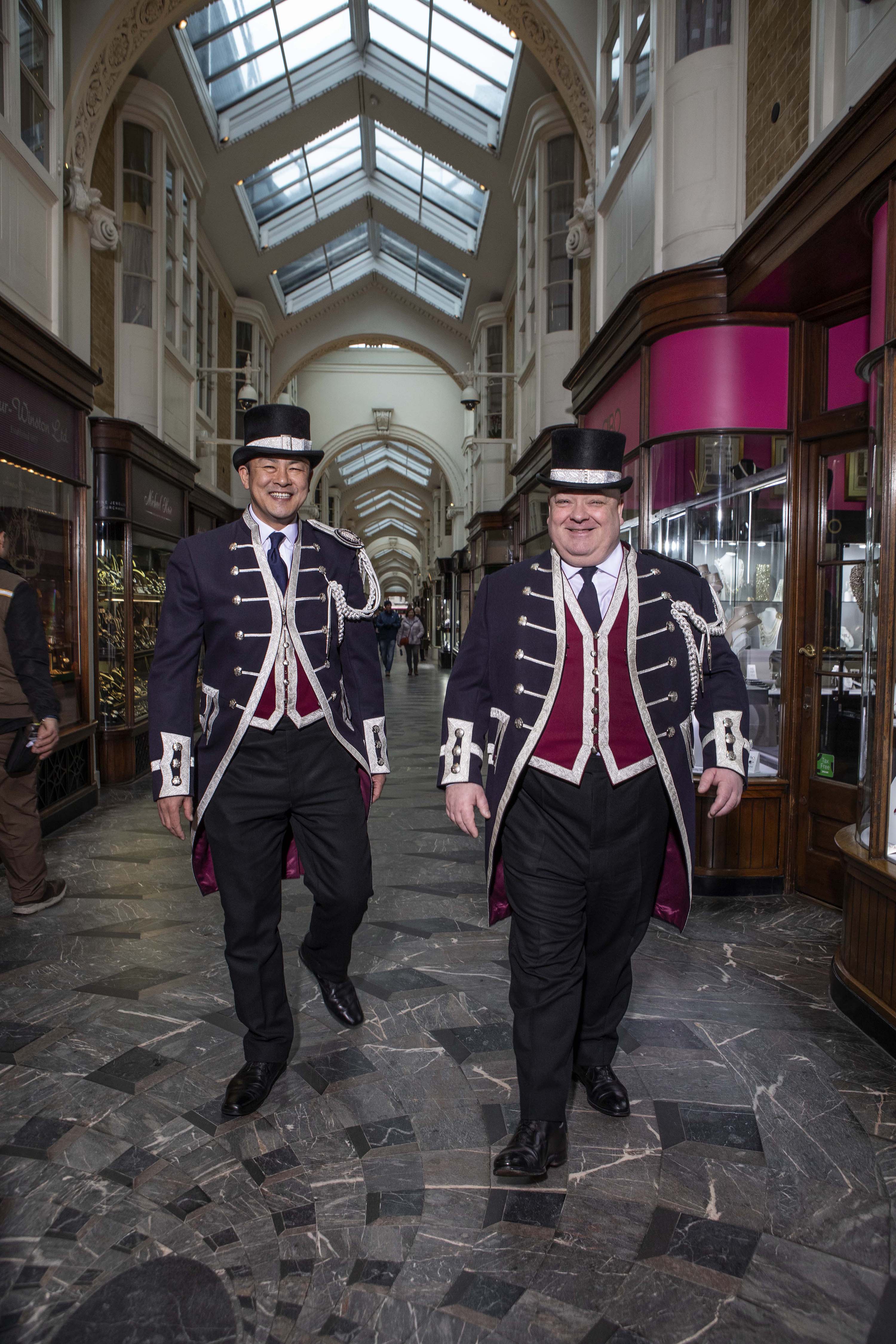

With headlights flashing and its horn blaring, a dark-blue Jaguar Mark X saloon tore up the Burlington Arcade. Halfway along this pedestrian-only Mayfair retail corridor, the car screeched to a halt. Five masked men burst out, wielding sledgehammers and iron bars. As shoppers scattered, the bandits smashed the windows of the Goldsmiths and Silversmiths Association and made away with a huge jewellery haul.
Saturday, June 27, 1964, was a black day in the 200-year history of the Burlington Beadles, the arcade’s private security team. Hefty bollards and gates now protect against ram-raiders and CCTV monitors every nook and cranny 24 hours a day, but the Beadles remain in their Victorian frock coats. They form the smallest and oldest police force in the world.
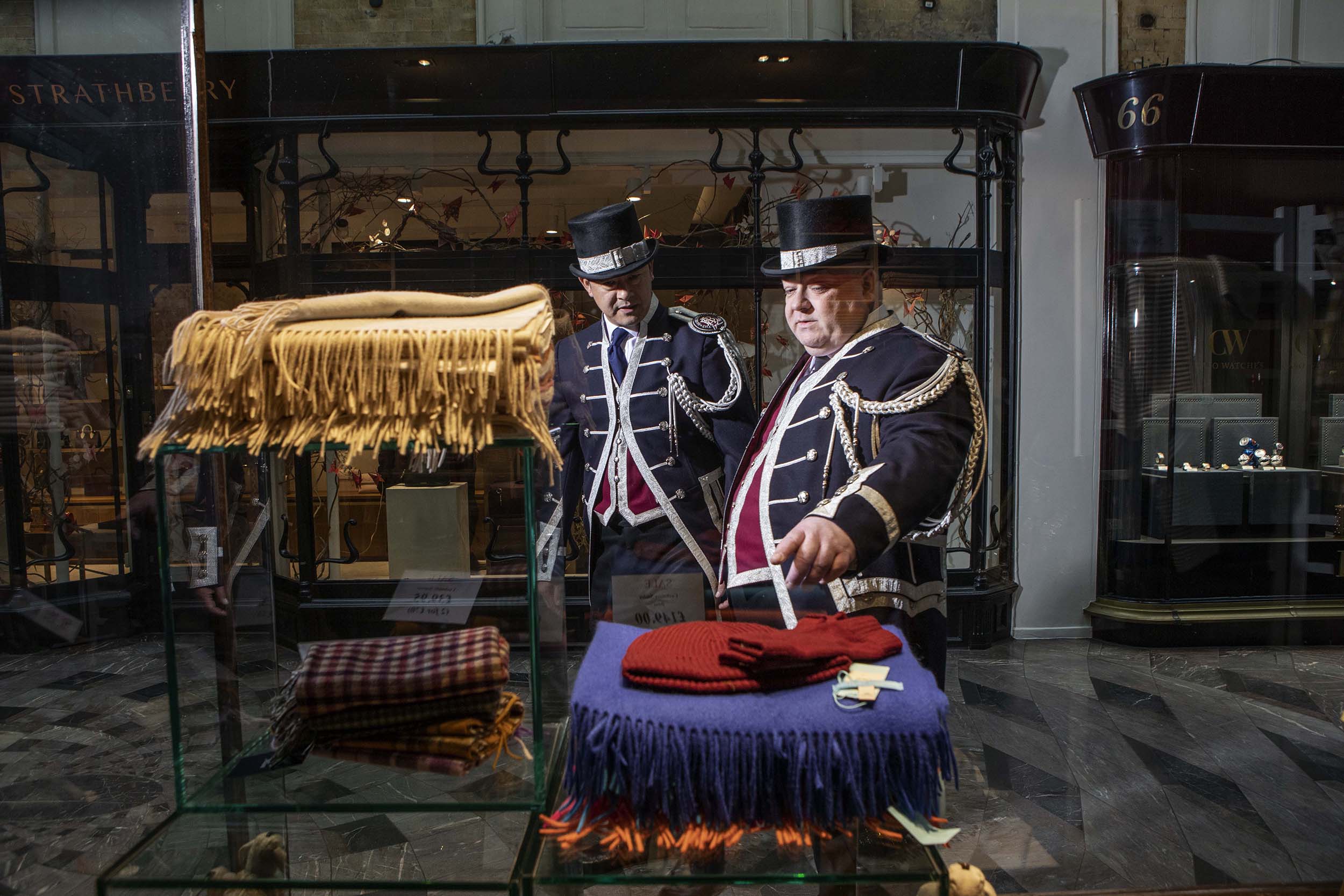
Mark Lord, 54, is the head Beadle today. When he’s not on foot patrol with the other seven Beadles, he’s to be found underground – passing through an unmarked door at the Piccadilly end of the arcade and down steep and narrow stairs to a corridor that, in the 19th century, would have seen dozens of Oliver Twists sprinting past with parcels.
“It is the antecedent to the shopping mall, although, the head Beadle warns, ‘some elements of London society will tar and feather you for saying that’ “
A door on the right opens into a tiny, grey security room. Mr Lord leans back in his office chair as he surveys 23 cameras across a bank of computer screens.
Originally, there was an armchair at either end of the arcade where a Beadle would sit and decide who could come in. Fittingly, Mr Lord has the air of a jolly East End bouncer. He says the Savile Row-cut uniform – designed as an amalgam of a soldier’s and a footman’s – makes the Beadles ‘feel 10ft tall, although my dad warned me when I took the job that I’d look like a chocolate button’.
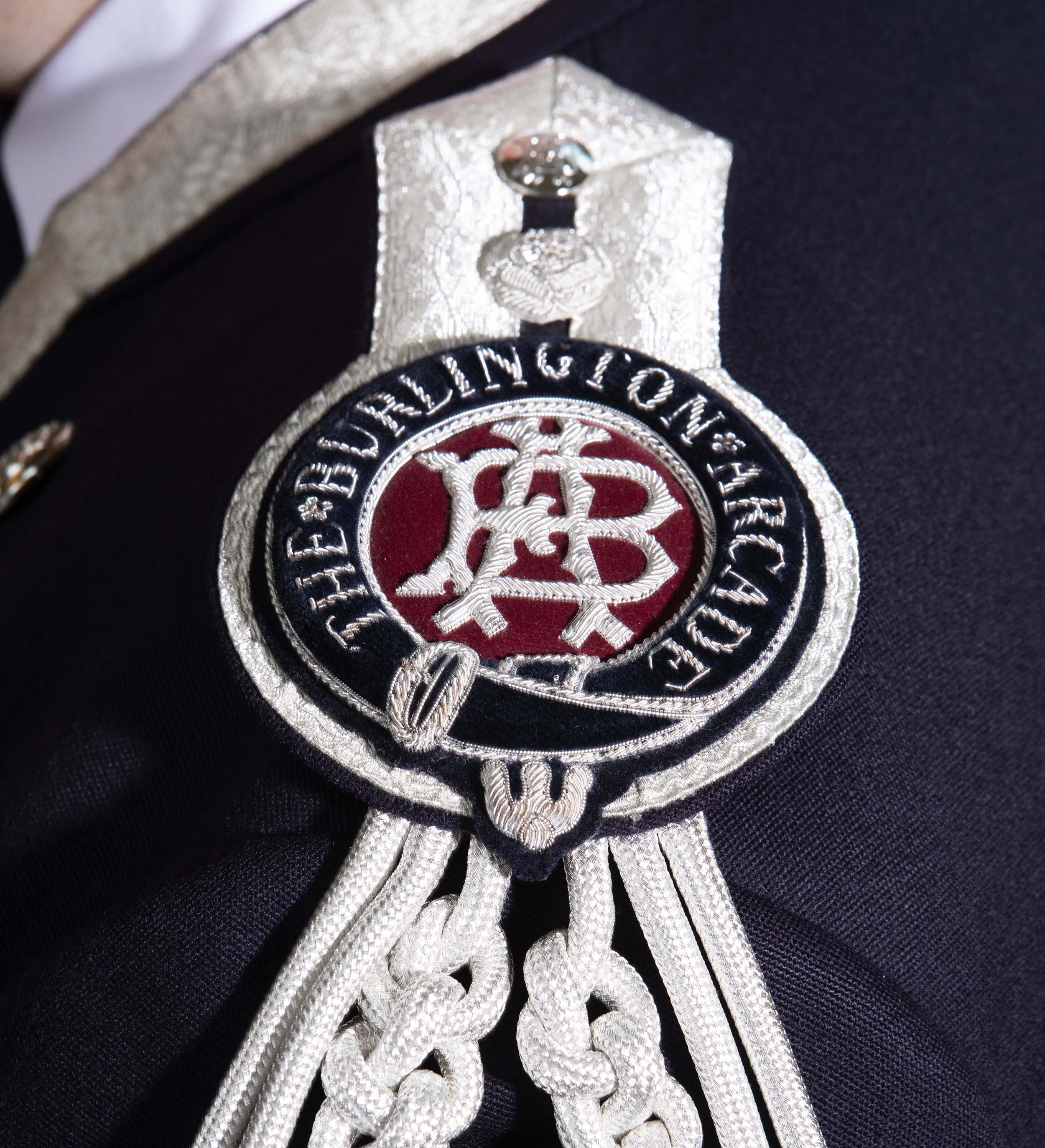
The Burlington Arcade was established by the gentry for the gentry. It is the antecedent to the shopping mall, although, the head Beadle warns, ‘some elements of London society will tar and feather you for saying that’. Everything about this place feels Dickensian. Some of the characters may have departed, but the spirit remains.
Serious crime is still a threat today, with the arcade’s 40 shops stocking inventory worth many, many millions. In the late 1800s, however, ‘lemon and lime’ was omnipresent and the Beadles were in a constant battle against ne’er do wells. This is why, famously, whistling is banned from the arcade – because it was used as code between pickpockets.
Sign up for the Country Life Newsletter
Exquisite houses, the beauty of Nature, and how to get the most from your life, straight to your inbox.
Clucking is also disallowed, after prostitutes rented the rooms overhead and used the sound as they waved red handkerchiefs to attract the attention of men below. Singing, or any kind of ‘merriment’ – that is, drunkenness – was and still is a definite no-no. Even today, the Beadles regard maintaining Regency decorum to be their responsibility.
“On the occasion of his daughter’s 18th birthday, he was able to give her a pair of heels signed by Manolo Blahnik. Unsurprisingly, she’s never worn them.”
Very occasionally, Beadles have failed to meet the standards they enforce. In the 1960s, a Beadle named Jock was made to stand in the middle of the arcade as he had the gold buttons snipped off his claret-coloured waistcoat, because he’d turned up for work sozzled.
Another, George Smith, was found to have taken money from cross-dressing louches Ernest Boulton and Frederick Park, turning a blind eye to their more bohemian activities. The 1871 revelations shocked high society.
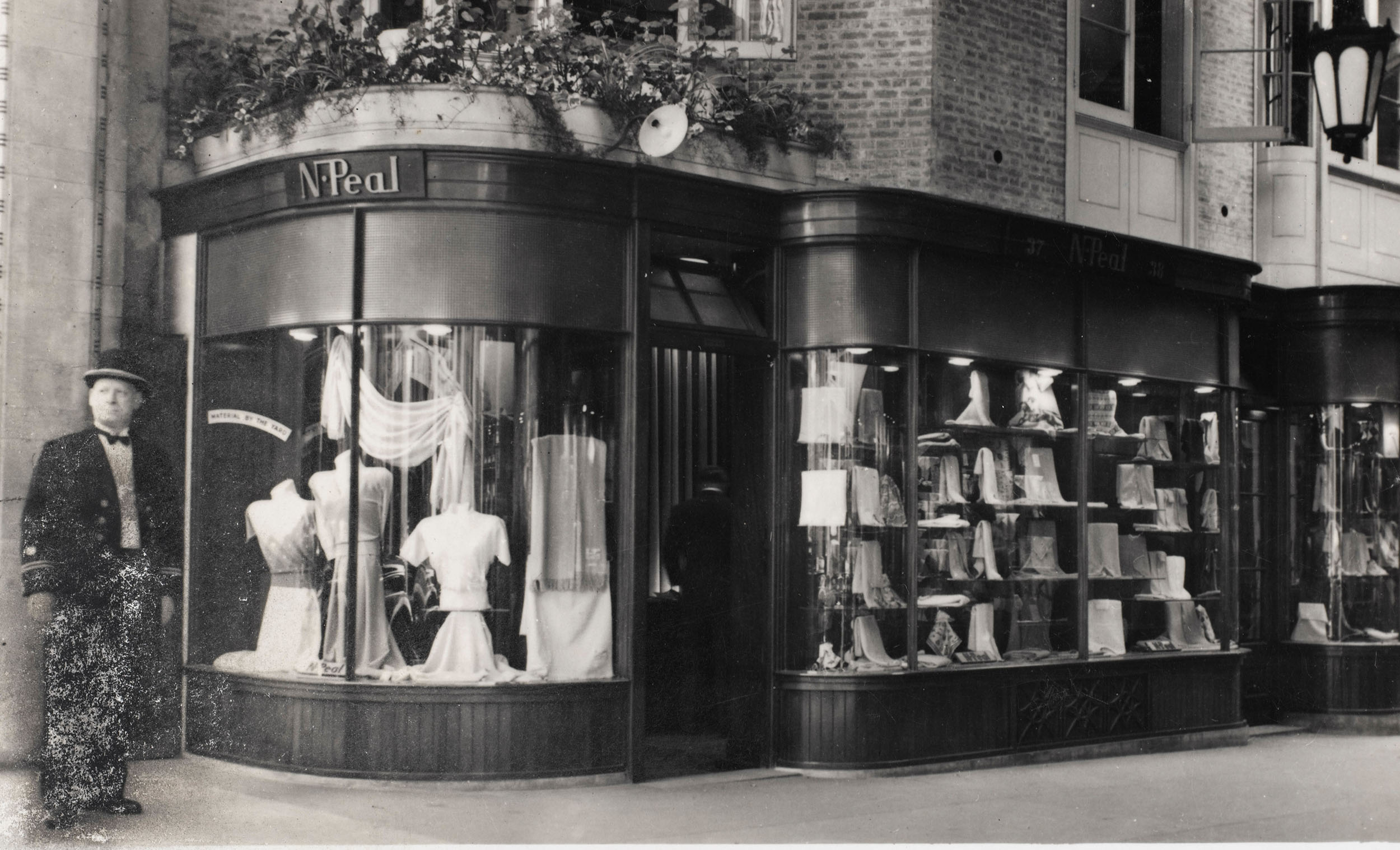
Up until the Second World War, the Beadles were all seconded from the 10th Royal Hussars, the regiment of the 1st Earl of Burlington, who established the arcade. Today, three are ex-military and another has worked in counter-terrorism. In general, the Beadles have become a reflection of the cosmopolitan capital.
Mr Lord, as you would imagine, knows absolutely everyone who works here – and everyone before them. If you’re a recurrent shopper or take a shortcut through the arcade with any regularity, the Beadles will always give you a smile.
After taking me for a tour of the shops and the cellars, where Victorian shopkeepers would cook, craft and wrap gifts, Mr Lord returns to his operations base for an undertaking of vital importance: to be fitted for a new goss-bodied hat. Evoking the one worn by Oddjob, Auric Goldfinger’s valet, he tells me they’re designed so you can slap someone around the face with them.
The hatter, from Cooper Stevens, has brought a steampunk-looking conformateur to take the sizing. Mr Lord looks wary, as if it might be a Victorian instrument of torture, despite doubtless getting through a few hats during his 17 years’ service.
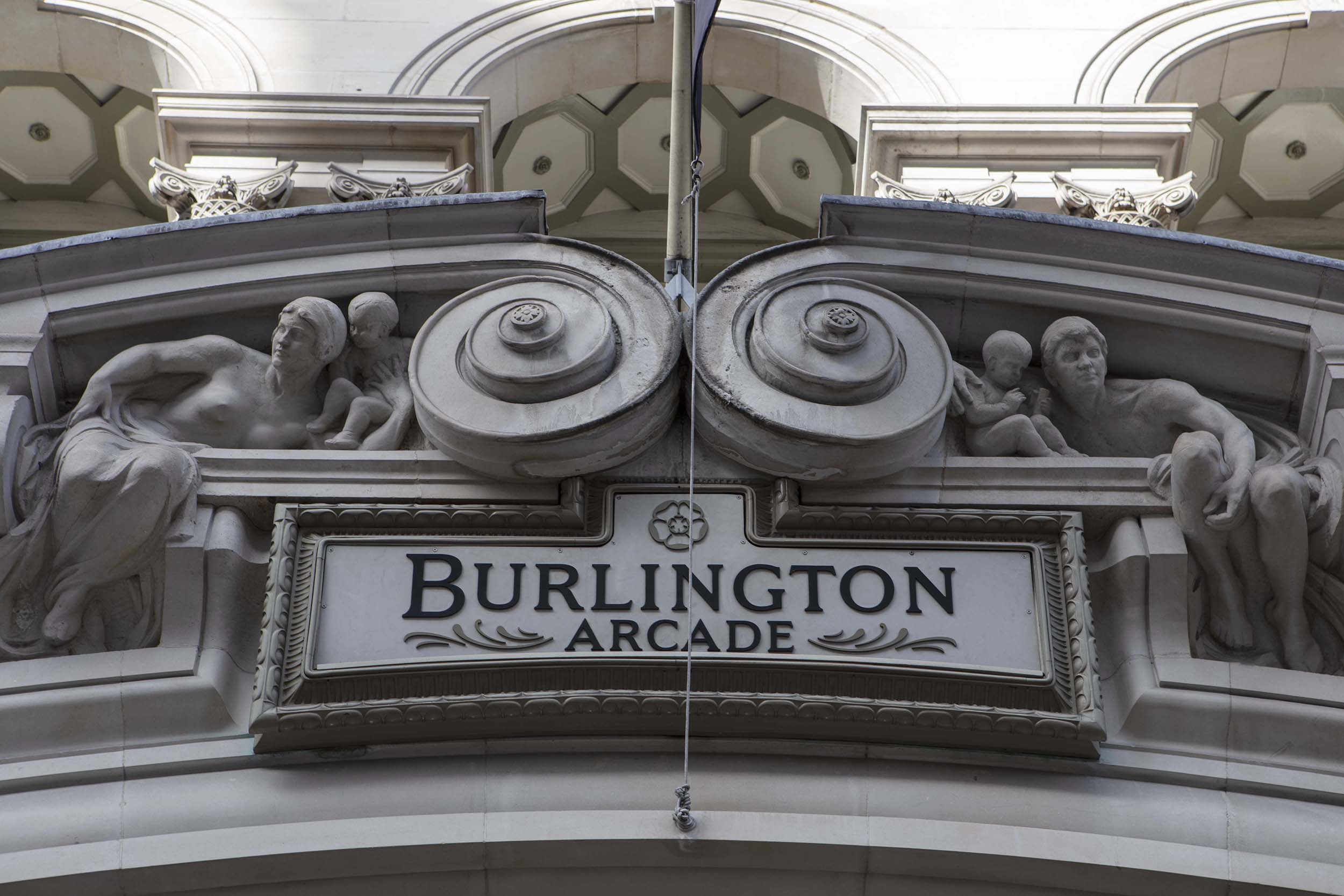
He considers the headgear and Henry Poole threads to be perks and there are others that come with the job. On the occasion of his daughter’s 18th birthday, he was able to give her a pair of heels signed by Manolo Blahnik. Unsurprisingly, she’s never worn them.
An instinct for body language is a Beadle’s most vital tool. They’re always on the lookout for anything suspicious. ‘If we see someone who looks like a thief, we give him a nod and a wink and he knows he’s burnt,’ shares Mr Lord. ‘One time, a guy came rushing through [you’re not allowed to run in the arcade] and he said: “Sorry, is it okay to come through? I think I’m being followed by the Old Bill.” As long as they leave the tenants alone…’
The shop that the Jaguar gang raided, number 44, is now Michael Rose Jewels and its windows are just as busy and expensive. Fortunately, in 1964, no one was hurt, but the thieves were never caught.
The head Beadle doesn’t think they’d have got past him today. ‘I can take a man down with one arm,’ he says and waits a beat. ‘But what if he’s got two?’
A brief history of the Burlington Arcade
- It was built to the order of George Cavendish, 1st Earl of Burlington, who lived alongside it at Burlington House. It was established as a safe place for his wife and her peers to indulge in retail therapy, as well as to stop people throwing oyster shells over his garden wall (oysters being the fast food of the day).
- The idea for the arcade was first raised by Cavendish during the Battle of Waterloo and many of the original 72 shopkeepers were war widows. The two-storey units were Cavendish’s gift of condolence.
- The marble floor has a slight incline, so ladies didn’t need to raise their long skirts.
- Hancocks, at Nos 52 and 53, fashions the country’s highest honour, the Victoria Cross. The bronze, from ancient Chinese cannons captured from the Russians in the Crimean War, is kept in a safe in the basement. There’s enough left for another 80 or so medals.
- Mary Ann Evans, also known as George Eliot, and her married lover George Henry Lewes used to leave love letters to each other between the pages of French literature in Jeff’s Bookshop at No 15.
- When directing The Prince and the Showgirl in 1957, Laurence Olivier would banish Marilyn Monroe to the Burling-ton Arcade to get her out of his hair.
- Fred Astaire was a regular shopper and once danced down the arcade in a brand-new pair of carpet slippers.
- Hurrying, opening umbrellas and singing are banned. Officially, the only person allowed to whistle in the arcade is Sir Paul McCartney. Apparently, a naughty schoolboy was also granted permission in 2011, earning a certificate as a reward for improving his behaviour at school.
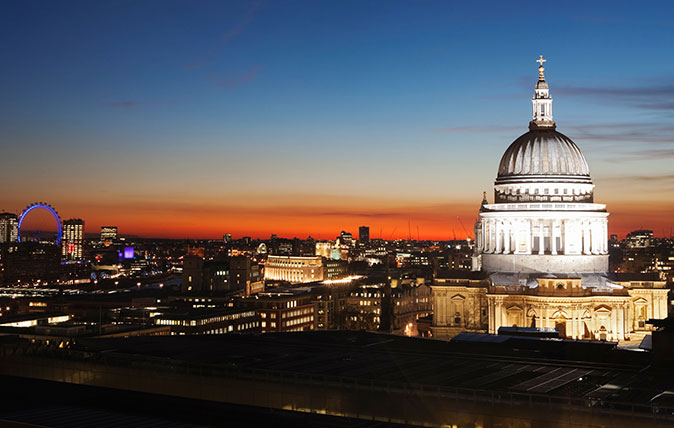
Credit: Alamy CPB0KX
Jason Goodwin: How to spend 24 hours in London without spending a penny
Our columnist Jason Goodwin headed to London expecting to have to dig deep to keep himself and his wife entertained.
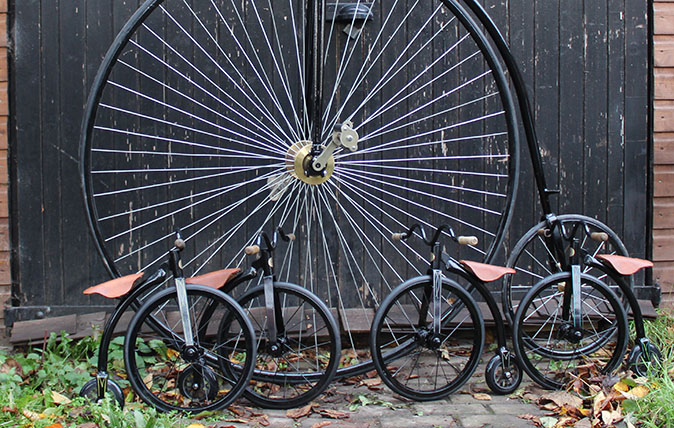
Credit: Richards of England
The utterly inessential shopping list: The illustrious party sporran, a penny farthing for your thoughts and two liquors for the price of fun
Forget about the big things. You can keep the necessities. Don't tell us about the must-haves. Alexandra Fraser takes a

Credit: Guide Dogs
The seven stages of life for a guide dog, from puppy to retiree
The work that goes into training a life-changing canine is immense.
Country Life is unlike any other magazine: the only glossy weekly on the newsstand and the only magazine that has been guest-edited by HRH The King not once, but twice. It is a celebration of modern rural life and all its diverse joys and pleasures — that was first published in Queen Victoria's Diamond Jubilee year. Our eclectic mixture of witty and informative content — from the most up-to-date property news and commentary and a coveted glimpse inside some of the UK's best houses and gardens, to gardening, the arts and interior design, written by experts in their field — still cannot be found in print or online, anywhere else.
-
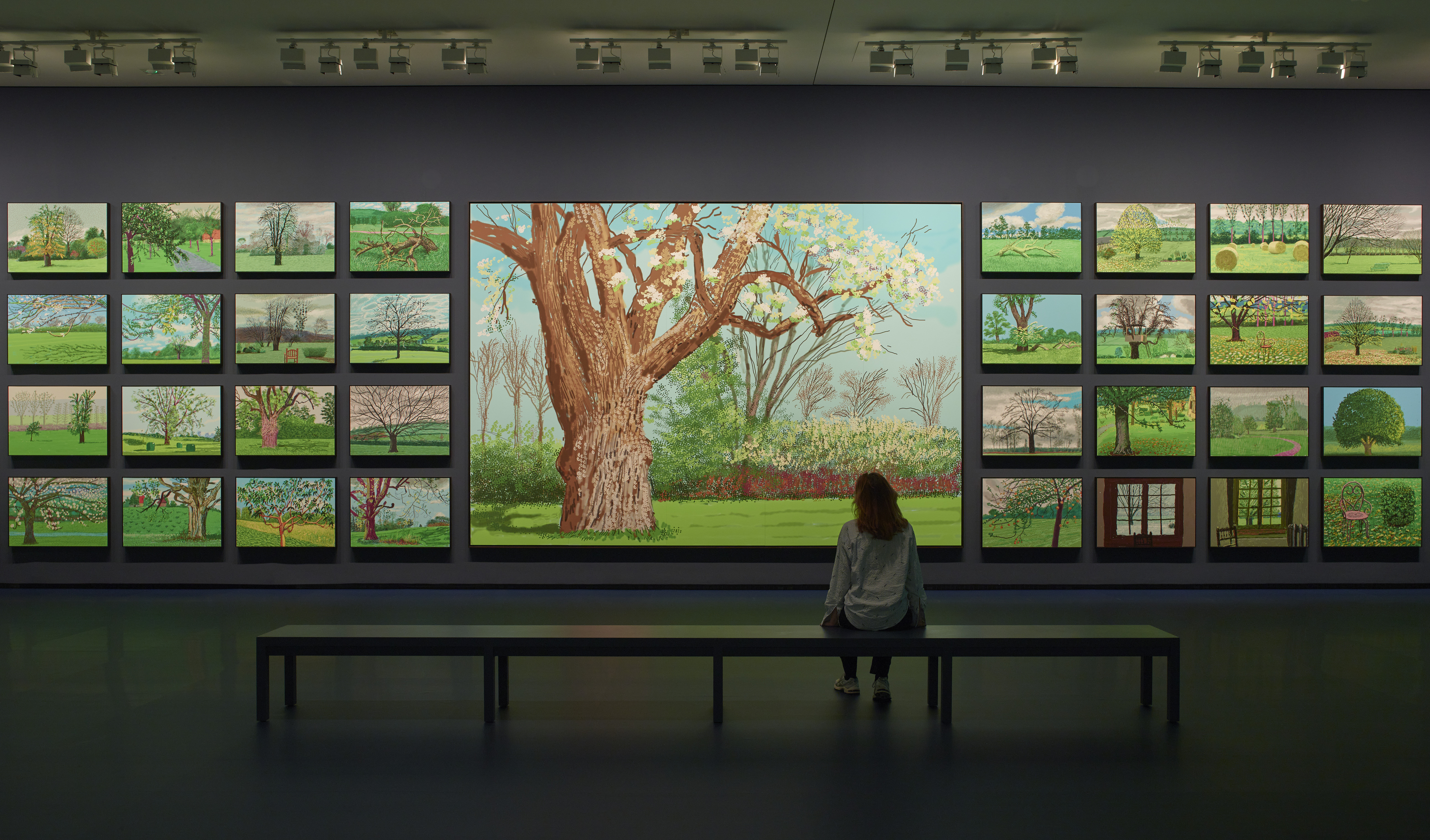 ‘David Hockney 25’ at the Fondation Louis Vuitton: Britain’s most influential contemporary artist pops up in Paris to remind us all of the joys of spring
‘David Hockney 25’ at the Fondation Louis Vuitton: Britain’s most influential contemporary artist pops up in Paris to remind us all of the joys of springThe biggest-ever David Hockney show has opened inside the Fondation Louis Vuitton in Paris — in time for the season that the artist has become synonymous with.
By Amy Serafin Published
-
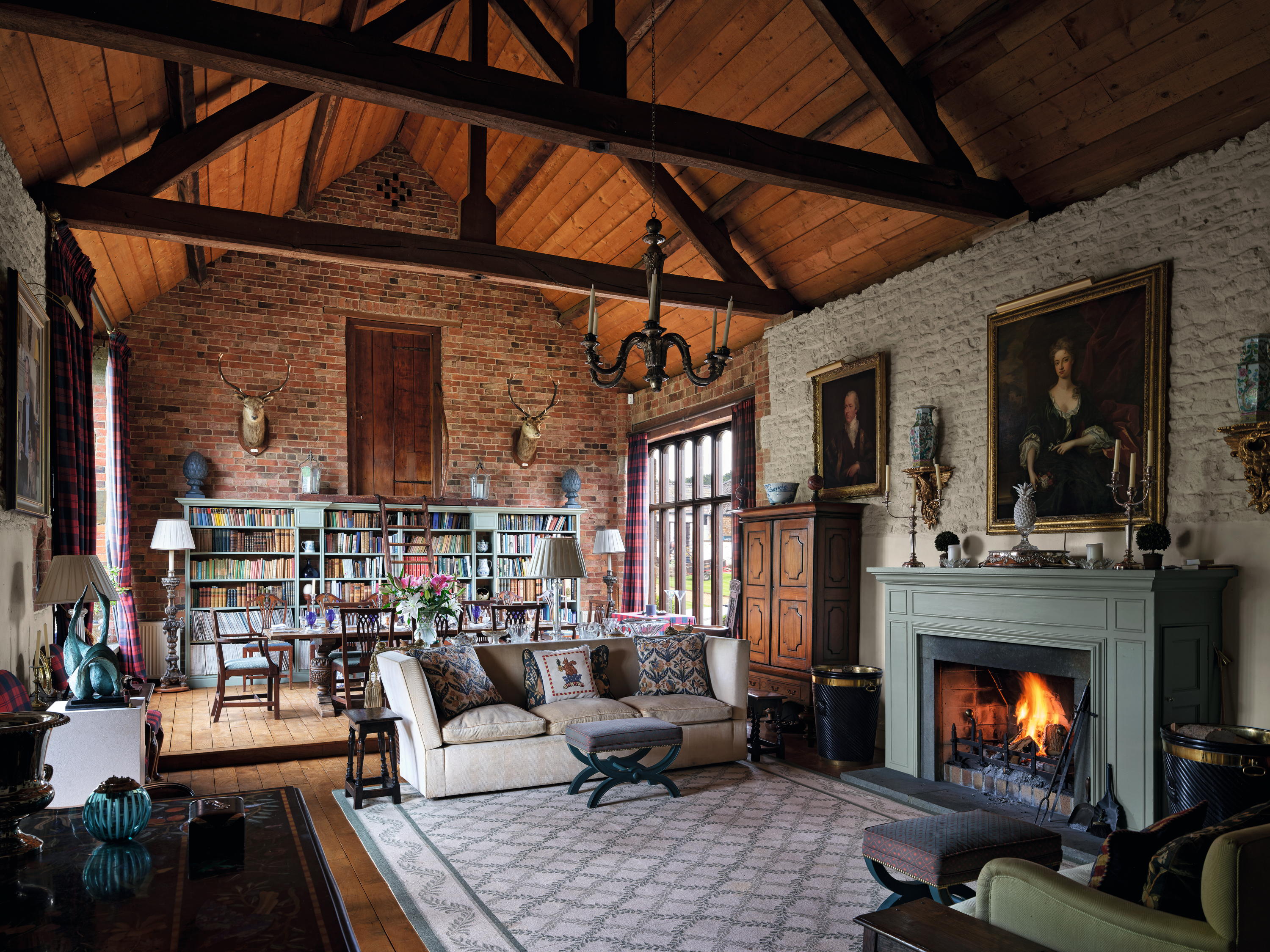 High Wardington House: A warm, characterful home that shows just what can be achieved with thought, invention and humour
High Wardington House: A warm, characterful home that shows just what can be achieved with thought, invention and humourAt High Wardington House in Oxfordshire — the home of Mr and Mrs Norman Hudson — a pre-eminent country house adviser has created a home from a 300-year-old farmhouse and farmyard. Jeremy Musson explains; photography by Will Pryce for Country Life.
By Jeremy Musson Published
-
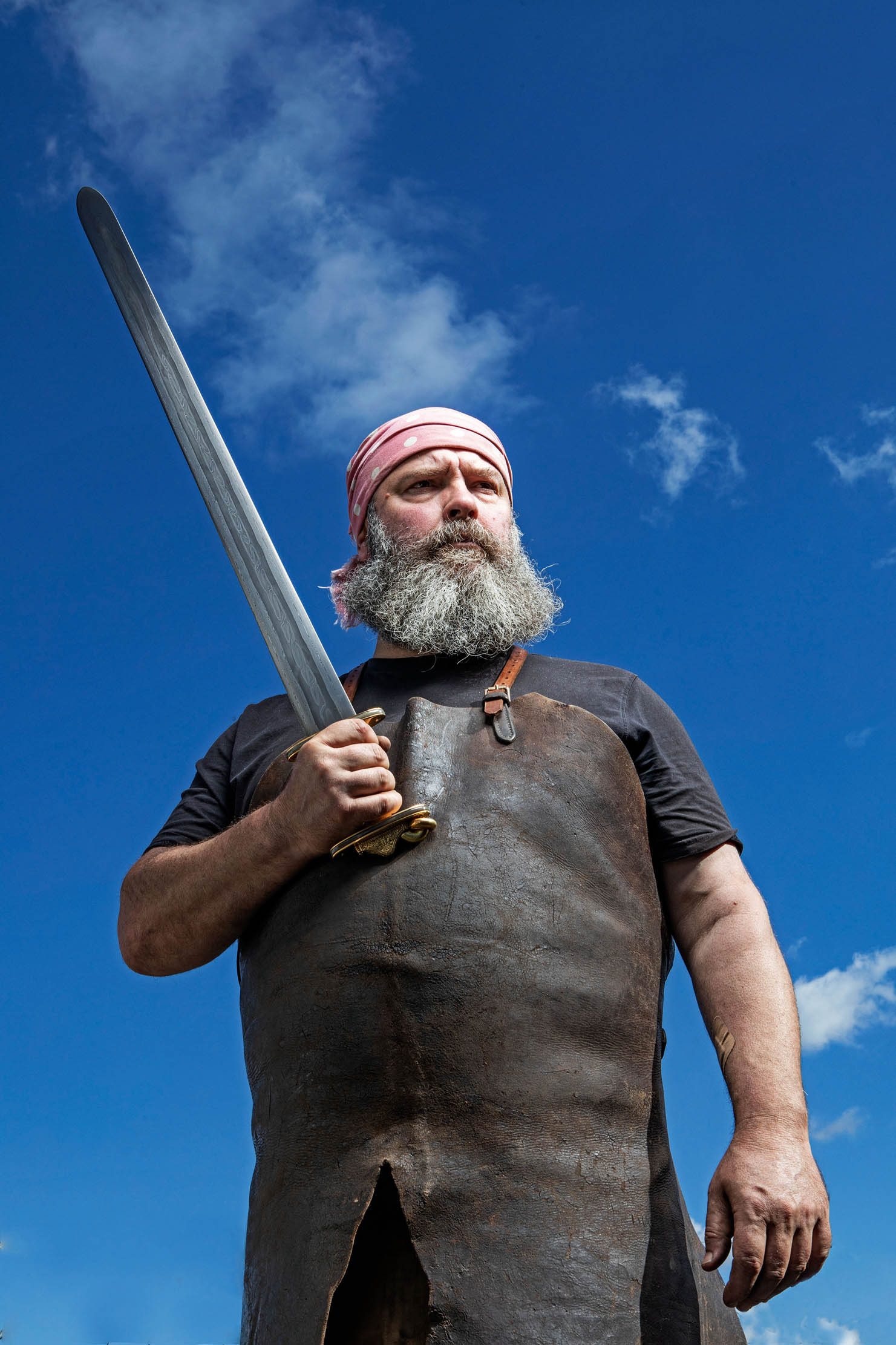 The 21st century sword maker: 'There’s something appealing about getting metal hot and smacking it with a hammer'
The 21st century sword maker: 'There’s something appealing about getting metal hot and smacking it with a hammer'Practising ancient techniques to craft modern heirlooms, bladesmith Owen Bush handmakes both decorative and practical knives or weaponry, each with their own personalities, says Claire Jackson — with some of his swords celebrities in their own right. Photographs by Richard Cannon for Country Life.
By Claire Jackson Published
-
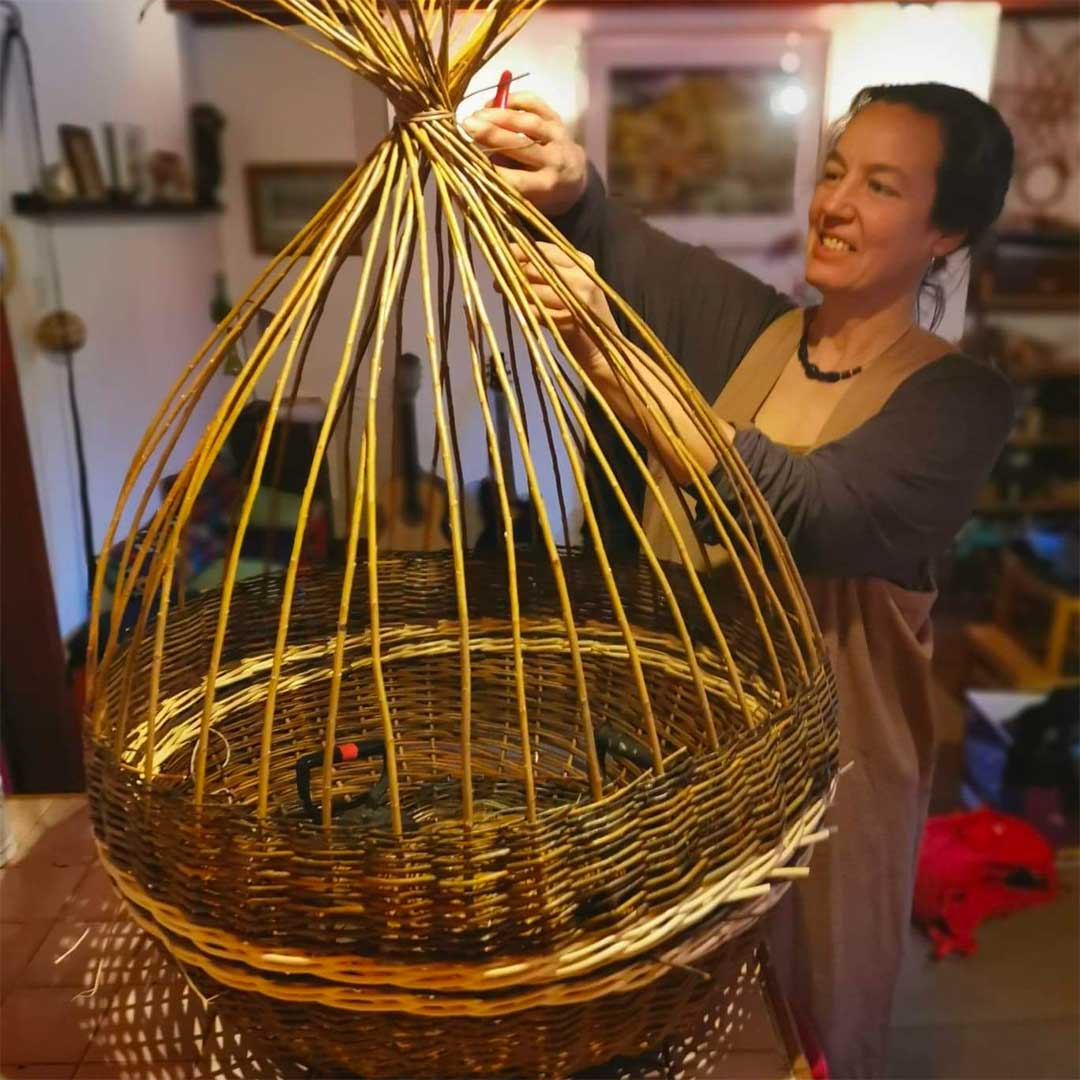 The secrets of the basket-maker: 'With a basket, you watch it grow before your very eyes'
The secrets of the basket-maker: 'With a basket, you watch it grow before your very eyes'Anna Stickland has woven a new career as a basket-maker; she spoke to Nick Hammond.
By Country Life Published
-
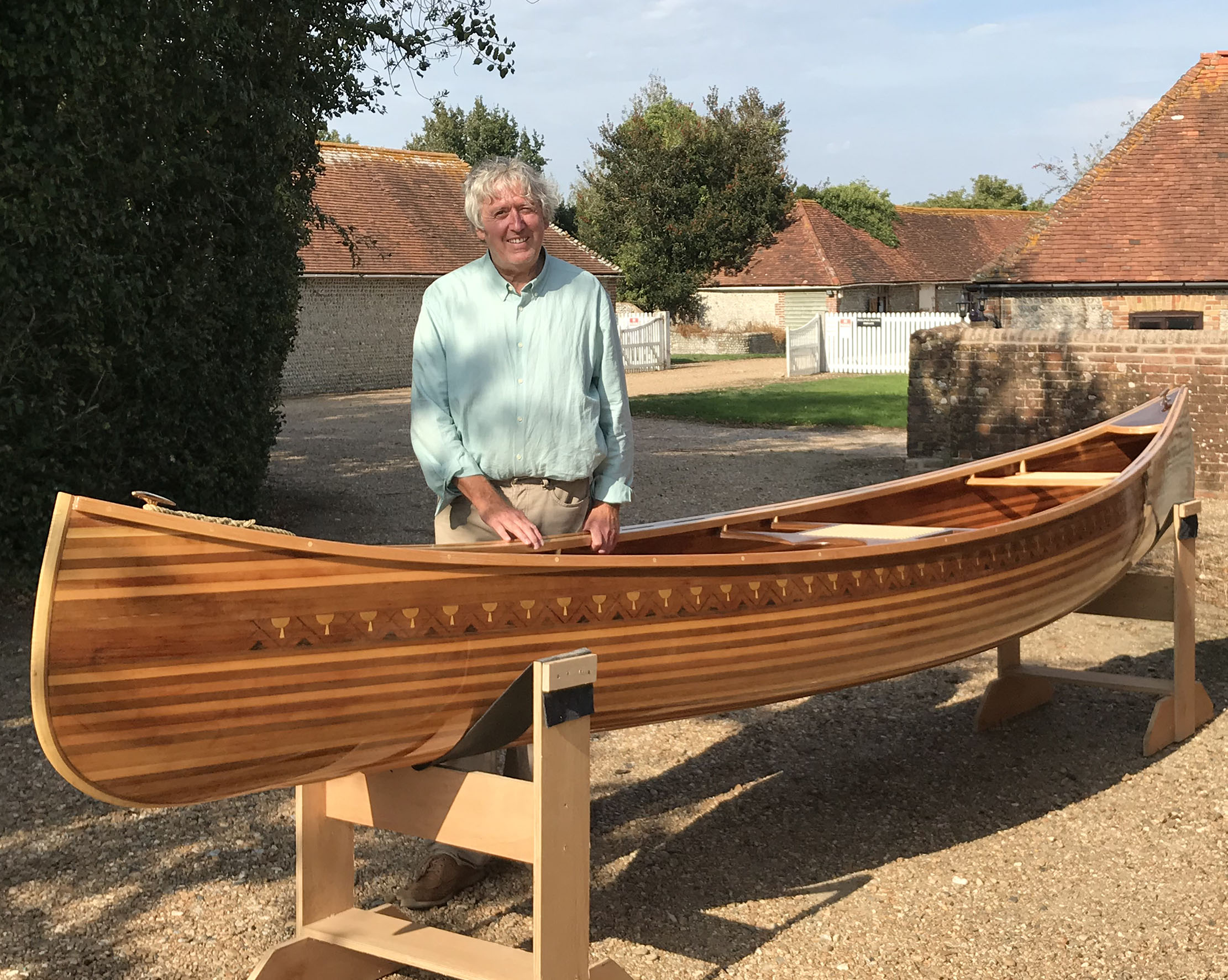 Where I Work: Huw Edwards-Jones, master craftsman and canoe maker
Where I Work: Huw Edwards-Jones, master craftsman and canoe makerThe ups and downs of 2020 didn't see Huw Edwards-Jones change where he worked, but it did change what he did: he's used the time to switch from creating beautiful hand-made furniture to spectacularly beautiful canoes. He spoke to Toby Keel.
By Toby Keel Published
-
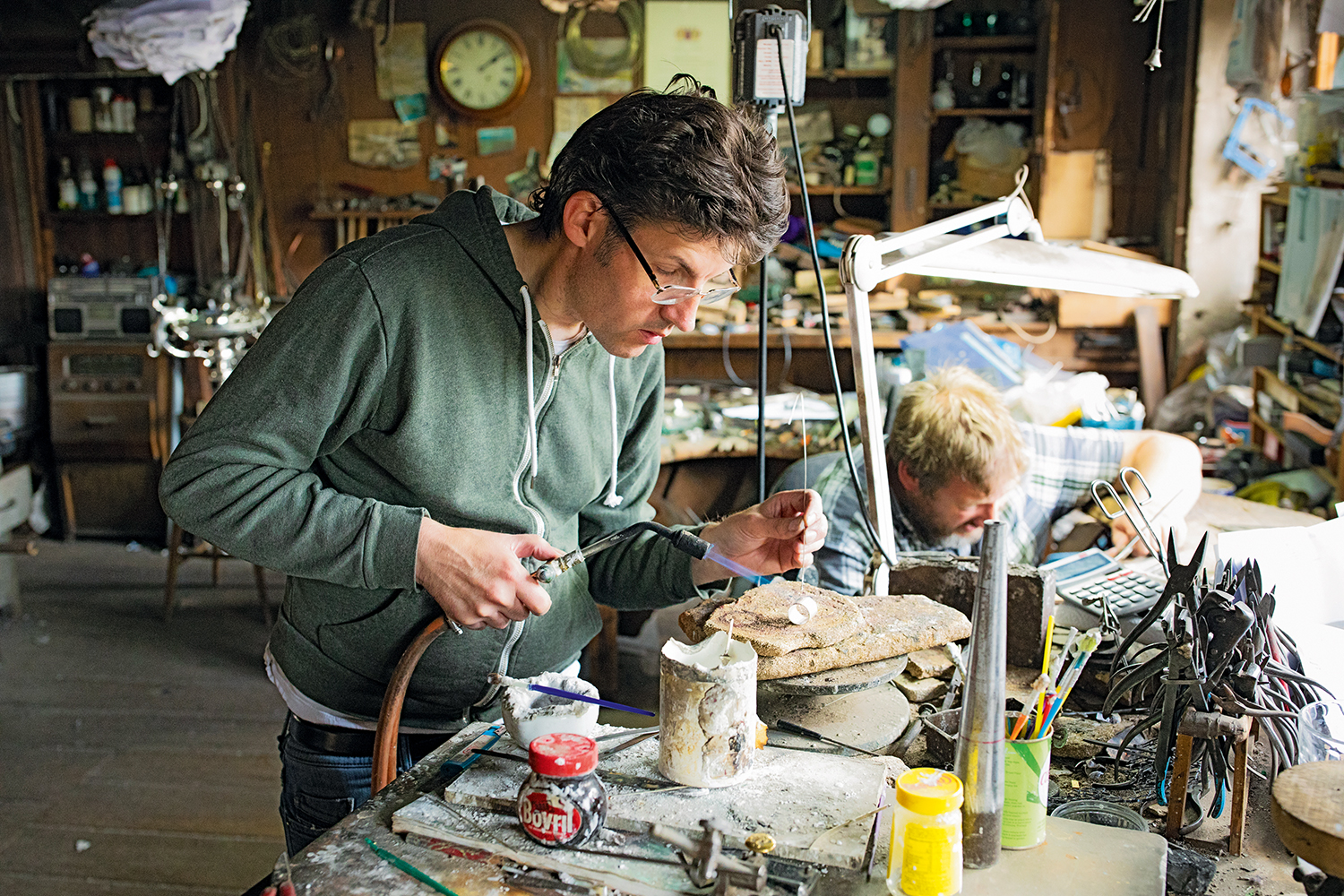 In Focus — The Cotswolds silversmith: 'We make beautiful works of art to last for hundreds of years'
In Focus — The Cotswolds silversmith: 'We make beautiful works of art to last for hundreds of years'Tucked away in an old Cotswolds silk mill, expert craftsmen harness a century of expertise to raise, planish and finish fine gold and silverware. Jeremy Flint visits Hart’s of Chipping Campden.
By Country Life Published
-
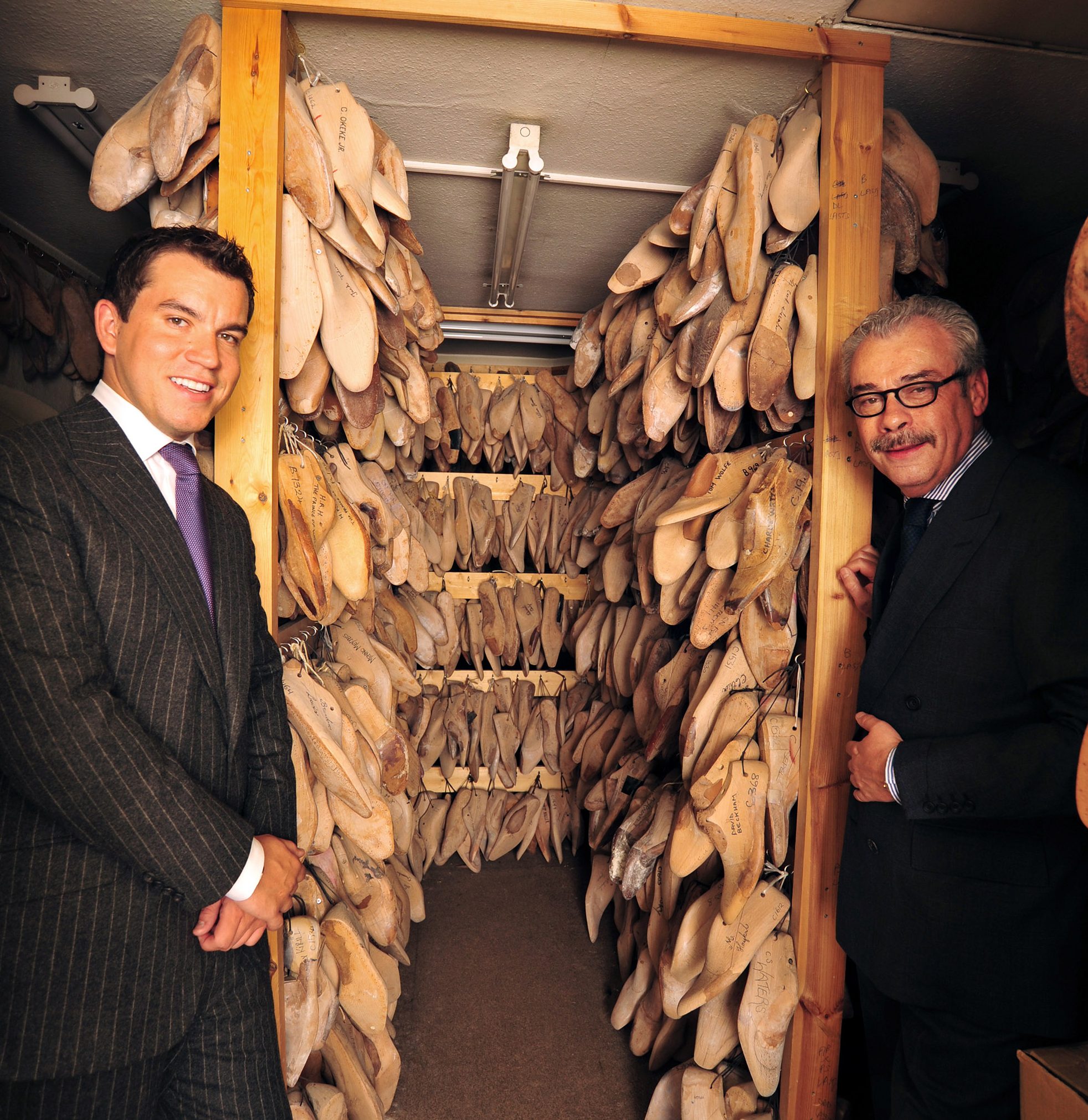 The master shoemakers who shod Churchill: 'Demand is through the roof, but it takes six to eight months to make a pair'
The master shoemakers who shod Churchill: 'Demand is through the roof, but it takes six to eight months to make a pair'The co-owners of bespoke shoe shop George Cleverley, father and son George Glasgow Snr and George Glasgow Jnr, talk to Hetty Lintell.
By Hetty Lintell Published
-
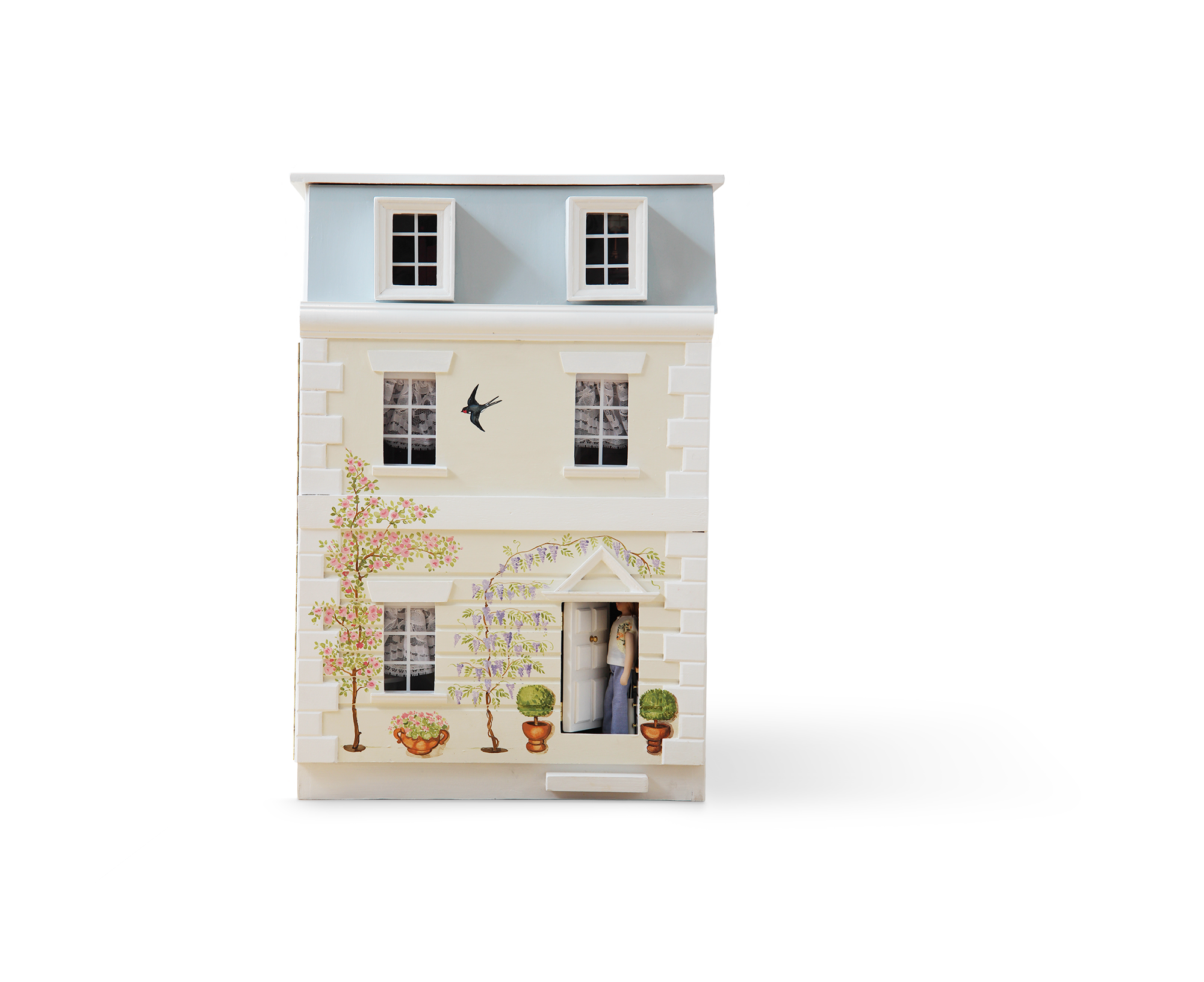 The dolls' house-maker: 'This is a place to capture the dreams of children and adults alike'
The dolls' house-maker: 'This is a place to capture the dreams of children and adults alike'Dragons of Walton Street have been making beautiful dolls' houses for four decades, and the company is still run by Lucinda Croft, the daughter of the founder. She spoke to Hetty Lintell.
By Hetty Lintell Published
-
 The bagpipe-maker: 'The older customers want me to make their pipes sharpish; they want to be sure they’re not dead before they get to play them!'
The bagpipe-maker: 'The older customers want me to make their pipes sharpish; they want to be sure they’re not dead before they get to play them!'Hours of intricate work are needed to craft a set of bagpipes. Kate Lovell spoke to bagpipe-maker Dave Shaw to find out how it's done.
By Country Life Published
-
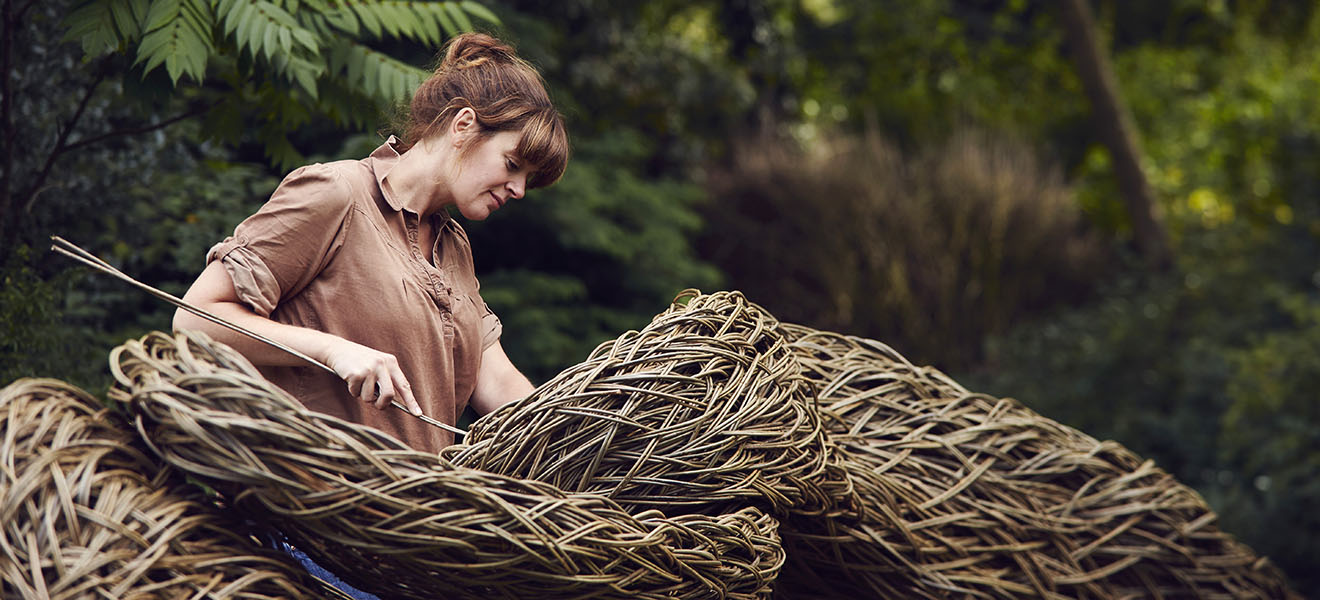 The willow weaver: 'I like to let the host structure feed the form'
The willow weaver: 'I like to let the host structure feed the form'With such romantic names as Dicky Meadows, Flanders Red and Noir de Verlaine, willow is one of Nature’s most versatile materials. Jane Wheatley meet Laura Ellen Bacon, who crafts works of art from twisted stems of Salix.
By Country Life Published